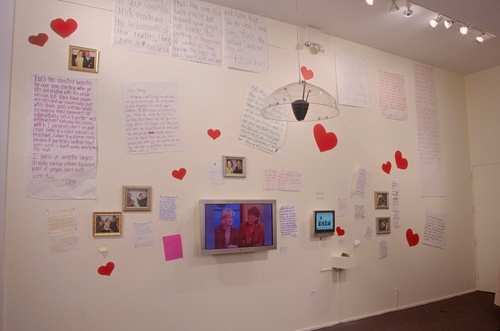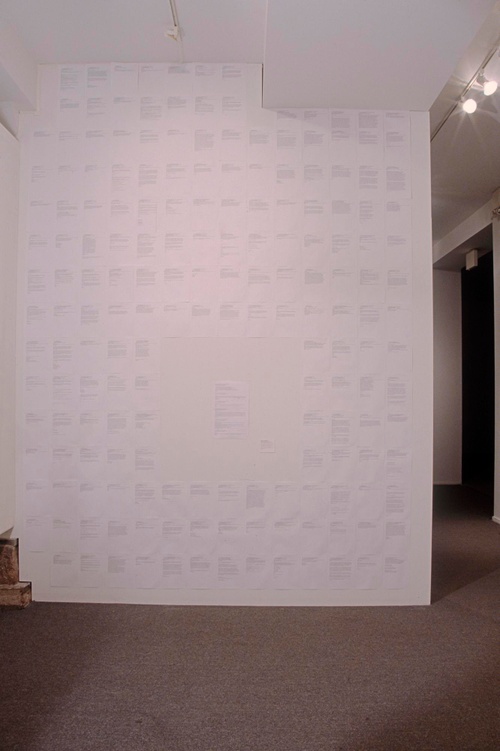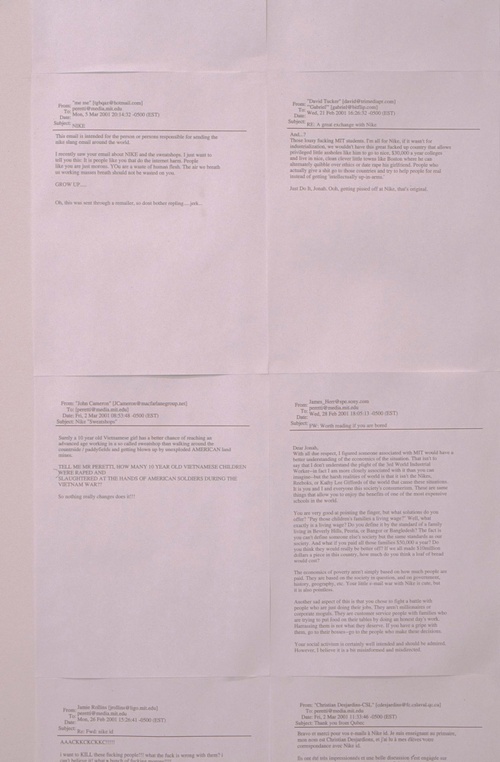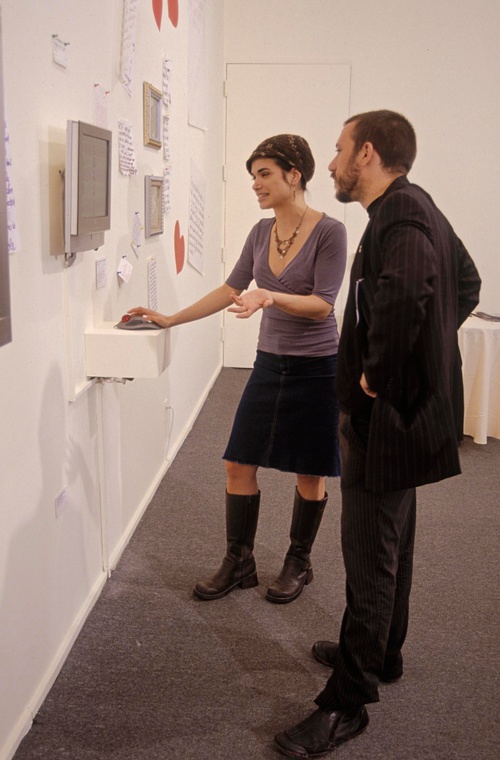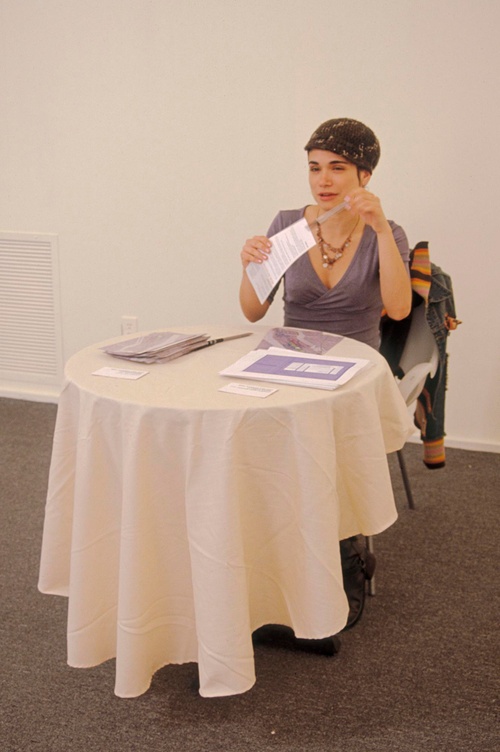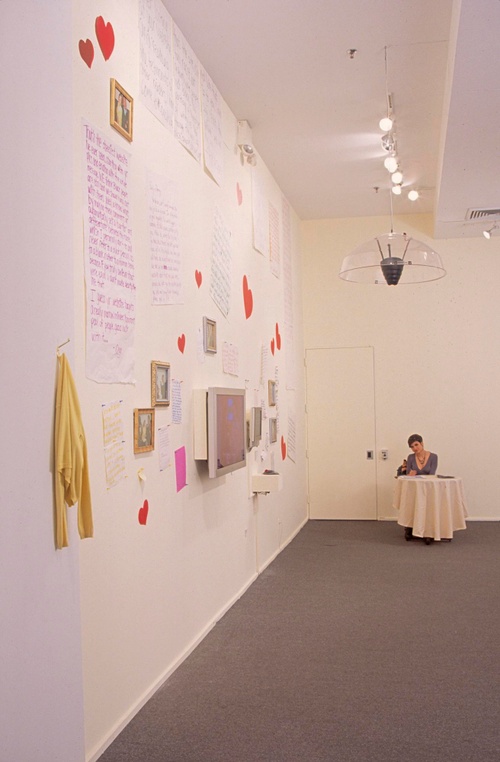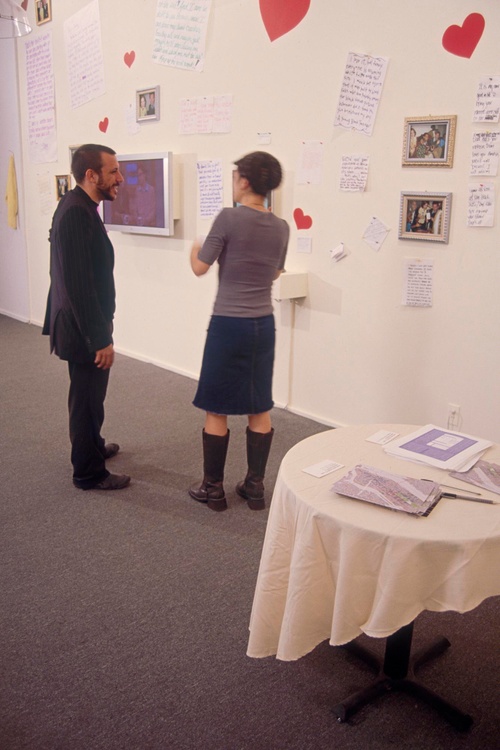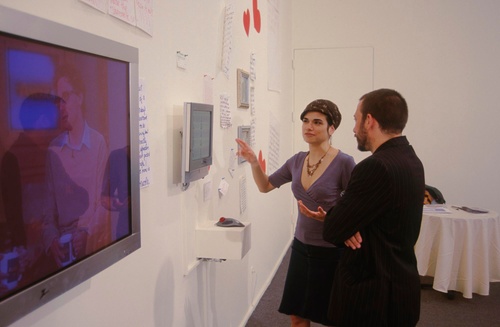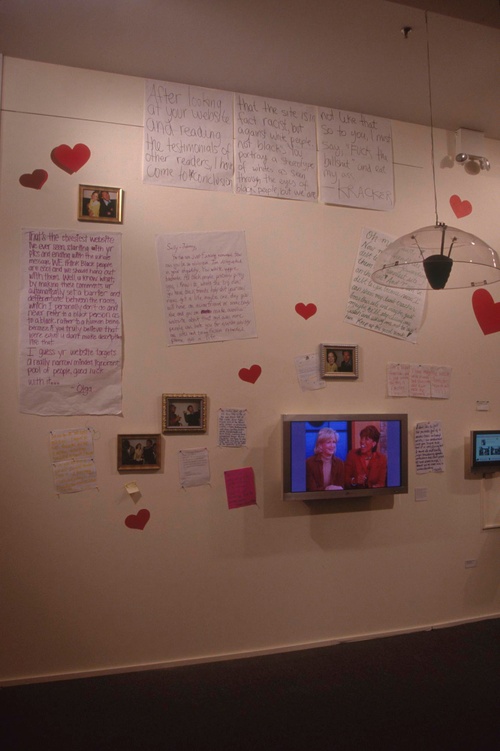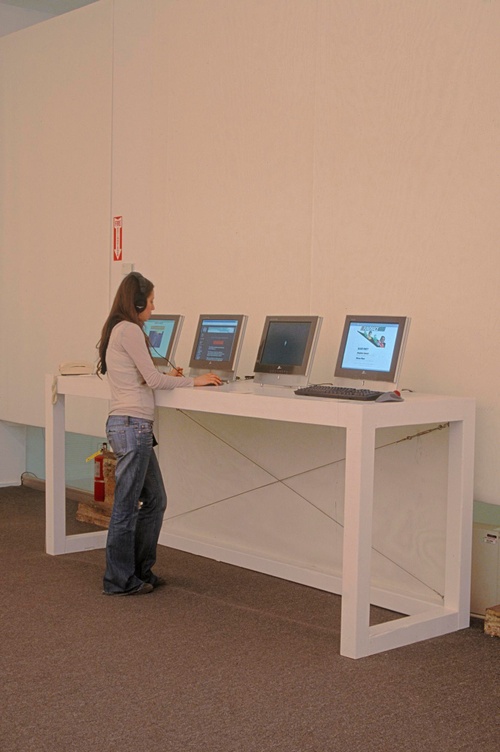Contagious Media
Contagious Media
What is contagious media? If you spend time online, read email, or pay attention to pop cultural fads, chances are you have come across a version of it. Contagious media projects use the viral techniques of contemporary information culture, email, phone messages, and web sites to become recognizable parts of public life. Often humorous, ironic, and mysterious in origin, they get discussed over water coolers at the office and forwarded to friends. Such projects as All Our Base Belong To Us, Hot or Not, and Dancing Baby have become strange icons of digital pop culture, notable perhaps only because they were passed around and discussed by millions.
As art works, contagious media projects recall experimental television of the 1970s, which engaged audiences by infiltrating and subverting public television broadcasts. It also has a strong relation to the identity-based and political artwork of the 1980s such as the works of American conceptual artist Adrian Piper (b. 1948).
BlackPeopleLoveUs.com (2002), conceived by researcher and programmer Jonah Peretti (b. 1974), Director of Research & Development and leader of the Contagious Media Group at Eyebeam, and his sister, writer and performer Chelsea Peretti (b. 1978), critiques subtle forms of white racism by parodying a couple who think themselves politically progressive and emancipated. On what appears to be a personal homepage, one sees a Caucasian couple documenting how they share “black culture.” In one section, a photograph reveals the couple giving each other a “high five” hand slap beneath a caption reading “Nigga, Pleeeeese!” An exaggeration of cluelessness derived from sitcom culture, BlackPeopleLoveUs.com activates the uncomfortable intransigence and subtleties of racism in a complex and humorous manner not usually seen in mainstream culture. Because of the “contagious” quality of the project, that is, because people are inclined to talk about BlackPeopleLoveUs.com’s intrigue with their peers, millions of people have visited the site, and it has been covered in publications and on television programs generally disinterested in contemporary art.
Peretti coined the term “contagious media” after his email correspondence with the sportswear company Nike regarding his request to personalize shoes with the term “sweatshop,” was read by millions and received coverage in the international news media. Installed in this exhibition to give a sense of the volume and breadth of response that Peretti received, the Nike email project convinced Peretti that a modest online communication with the right tone, simplicity, and brevity could, literally, go a long way. Describing the execution of his individual and collective projects as a balancing act of concept, content, URL, and design, Peretti explains that his aesthetic “pay(s) homage to hobbyist and amateur” visuals. The lack of formal polish of the works in the exhibition Contagious Media reflects that the elimination of precious design elements yields fertile ground for mass appeal. (Indeed, in pre-Internet times, minimalist and conceptual artists mastered this balancing act, though their work was rarely accessible enough for popular consumption).
Whereas paintings, sculpture, or installations tend to be evaluated in terms of critical success or monetary value, for contagious media penetration–that is, how quickly and extensively a project can spread via the viral networks of email, TV, web, phone, and instant messaging–is the indicator of success. The credo of its practitioners, according to Jonah Peretti, is to “make something that people want to share with their friends. If you do that successfully, you can reach a large audience through word of mouth. This creates new opportunities for art distribution and activism.”
The Perettis’ formal inventions and politics are inter-related. In fact, in BlackPeopleLoveUs.com, a project that was produced in collaboration with Bobby Tisdale, Valerie Clift, Tchaiko Omawale, Jose Germosen, Adeola Enigkoban, Forrest, and Dela, vexing portrayals of race consciousness are filled with awkward social dynamics that left even the seasoned hosts of mainstream television’s Good Morning America speechless when the website was featured on the program. The use of parody and performance in BlackPeopleLoveUs.com coaxes participants into thinking about issues they would rather ignore and allows them to talk back. One of the most important aspects of the web site is the “Letters” section where published emails from site visitors demonstrate their range of reactions and emotions. Joining hobbyist web page formalism with riveting social content, the Perettis deliberately obscure politicized rhetoric, creating a portrait of the subtleties of racism delineated in witty detail.
The Rejection Line (2002) was born when Jonah Peretti found that some of his female friends had trouble avoiding unwanted romantic overtures from men. He, along with Chelsea Peretti, and guest performers Dennis Quinn and Becky Poole, created a voicemail recording that would address the difficulty women have to deflect these come-ons. Chelsea Peretti explains that it was a “joke with a practical application.” The project begins when the phone number 212-479-7990 is given out in response to an irritating come-on. Those who call hear the message, “The person who gave you this number does not want to talk to you or see you again. We would like to take this opportunity to officially reject you.” The Rejection Line can be seen as a humorous, cyber-age descendant of Adrian Piper’s My Calling (Card) # 2 (1986-90), in which the artist distributed a card to men that let them know her wish to be alone in advance of any overtures they might make towards her. In both projects, the presumably male participant’s overture is challenged, and the come-on endowed with an added level of embarrassment. However, unlike Piper’s project The Rejection Line uses the reach of the internet through an accompanying web site and an overt sense of humor to insure that the “joke” spreads. Indeed, over one million people have called and used the New York number over the last three years - an indication that socially-engaged aesthetic practice may be spilling over its supposed boundaries into full-blown contagion. Catch it
